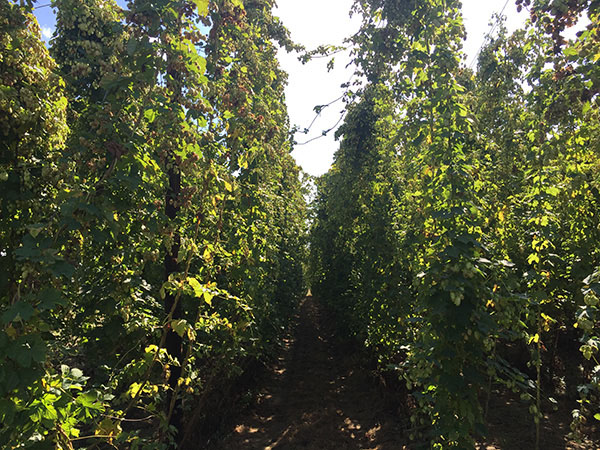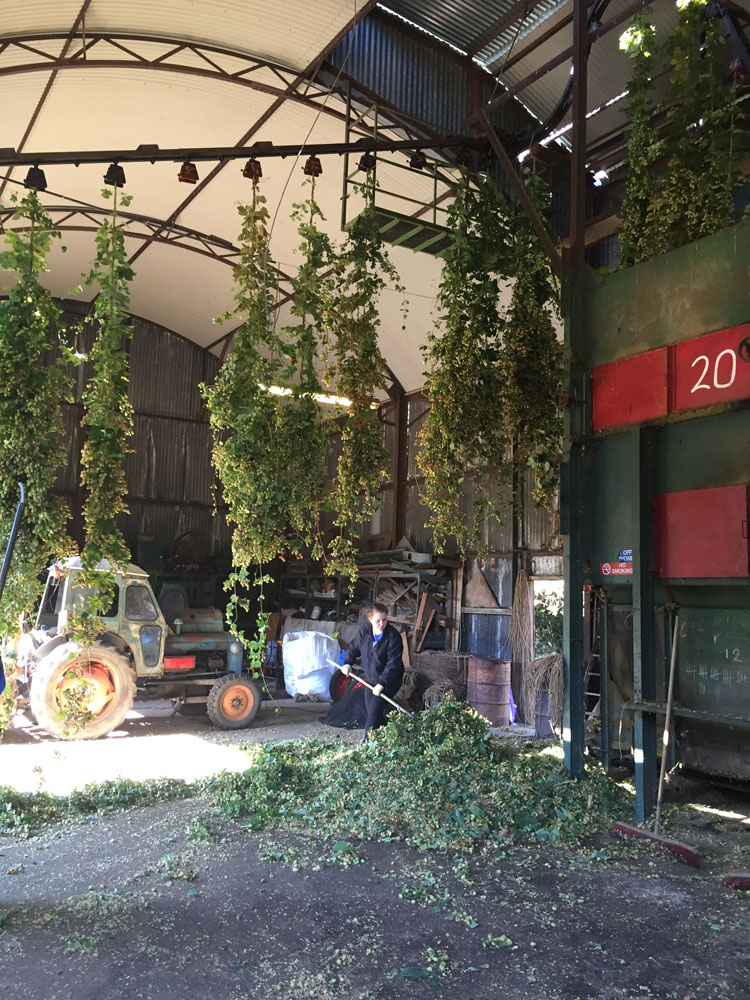Shepherd Neame Brewers Inspect Hop Harvest
Earlier this month, I was delighted to join our brewers for a tour of the farm owned by local hop grower Tony Redsell. We were shown around his hop gardens, watched the bines being harvested and inspected the cones on the bine.
As with all farming, the weather has a major impact on hop growth and harvest, and although we may have been enjoying basking in beautiful sunshine in the South East this year, it has had a mixed impact of the quality of the hops.Most of Tony’s hop gardens are irrigated so the lack of rainfall is not as devastating as it could be, but the hot, dry weather has led to an increase in the amount of Powdery Mildew. It is a fungal disease caused by a range of fungi that have an unusually high water content meaning they can survive and prosper in drier conditions. They cause a white, dusty coating over the leaves of the hop bine, reducing the amount of sunlight that can reach the plant leaves, and feed on the plant, stunting its growth. The hot weather has, however, also had a positive impact on reducing the amount of pests this year. Many of the pests, especially the aphids, have perished due to the temperatures soaring over 30°C recently.
Tony’s hops looked plump, fresh, and smelt amazing. With more than 50 years’ experience in the hop growing industry, he is obviously able to get the best out of every crop despite any weather challenges. This year has been challenging for one garden of Challenger hops, however, and how this will affect final yields will become apparent after the harvest is complete.Hop harvest is intensive and rapid. Starting late August/early September, it is usually completed within a couple of weeks. Luckily the use of tractors and mechanisation has sped the process up remarkably. Pickers cut the hop bines at about three feet off the ground and they are left to dangle from the top support wires. A tractor follows, holding a set of pickers on a high level platform who cut the top of the bines free so that they fall neatly into the trailer below.
We were then shown the processing plant where the hop cones are removed from the bines and debris is removed. The bines are hung on hooks attached to a conveyer which take the bines up to high level and dangle them over rotating drums that strip the foliage and cones from the bine. The string and the bine are discarded to be made into compost along with the leaf debris. The leaves and cones go through stages of angled vibrating plates to allow the cones to roll downwards while extracting the leaves upwards. Many old varieties of hops went out of fashion when the industry became mechanised purely because they did not ‘roll well’!
Once sorted from the debris, the cones are gently dried in large containers with hot air over a 24 hour period before being compressed into hop bales. They are then sent to hop merchants to be sold as whole hop cones, or processed into hop pellets, oils or extracts used to create that beautiful aroma and bitterness that we enjoy in our beer.
Sarah Marshall, Laboratory Manager

